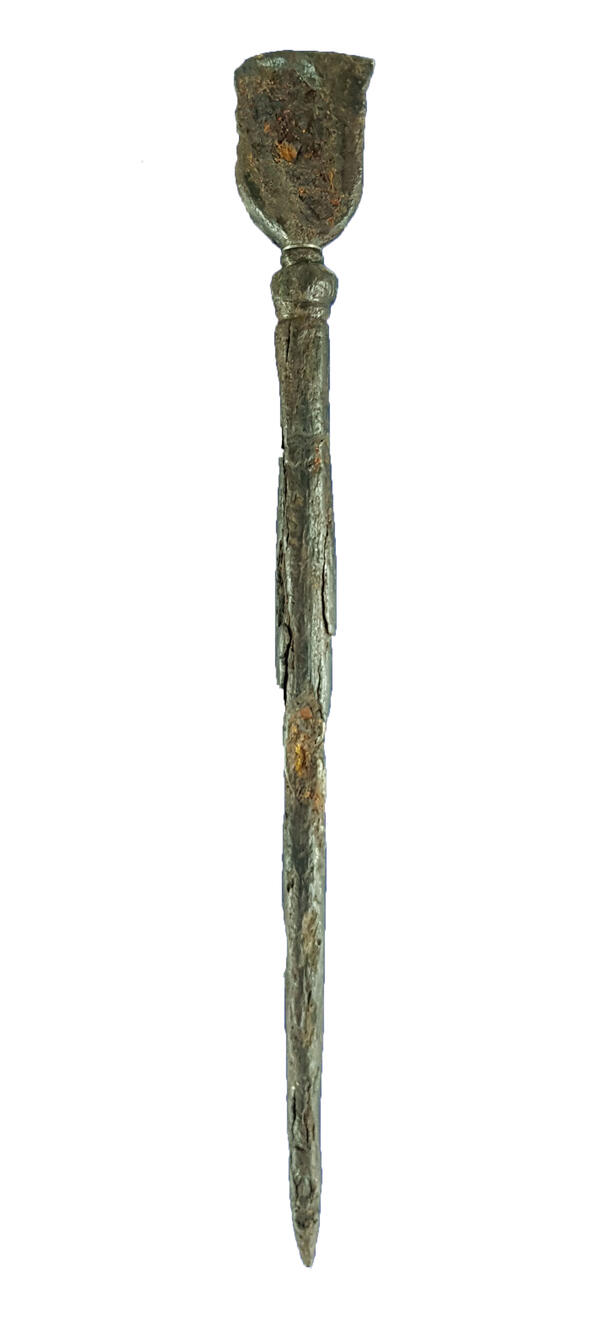The Kursk Regional Museum of Archaeology displays a writing tool — an iron stylus dating from the second half of the 12th to the middle of the 13th century. This tool was found by the archaeologist Vladimir Vasilievich Enukov during the excavations in the historical part of Kursk in 1995.
Among the locations in ancient Russia the greatest number of birch-bark manuscripts is found in the archaeological deposits of Veliky Novgorod. The majority of birch-bark manuscripts are private letters of business nature (records of debt recovery, trade, household instructions). There are also drafts of official acts on birch bark: wills, receipts, bills of sale, court records and other documents. The use of birch bark as a writing material, as well as the drawing of letters itself, was a complicated and specific craft for medieval Novgorodians. It is also known that besides birch bark, Novgorodians also used cerae, wooden tablets, which were covered with wax on one side.
On the territory of the Ancient Russian state they were used alongside the tools for writing. Such tools were called “pisalo” in the chronicles. It is mentioned in a number of the Novgorod chronicles of the 11th–16th centuries. As a rule, a stylus (a pisalo) was a multifunctional tool. The pointed end of the stem was used to write letters (signs or trace drawings) while the upper end, or “spatula”, was used to correct the text on birch bark or to smooth or scrape off wax in cerae. Probably the function of the spatula, judging by its design features, was not only to erase text but also to remove wax poured into molds before they cooled completely, preserving the inscriptions on it. Judging by the nature of the inscriptions on plaster and stone, pottery and slate, and even metal, the styluses could be used to write on harder materials.
The spatula is in the shape of a graceful goblet with retracted edges. The body of the spatula has straight smoothed walls of an elongated goblet with no waist in the middle. The edges of the blade are retracted. This shape is the most common among the tools of this type. Analogues come from the materials of excavations of Ancient Novgorod, where similar styluses were found in the layers relating to the second half of the 12th — middle of the 13th centuries.
Among the locations in ancient Russia the greatest number of birch-bark manuscripts is found in the archaeological deposits of Veliky Novgorod. The majority of birch-bark manuscripts are private letters of business nature (records of debt recovery, trade, household instructions). There are also drafts of official acts on birch bark: wills, receipts, bills of sale, court records and other documents. The use of birch bark as a writing material, as well as the drawing of letters itself, was a complicated and specific craft for medieval Novgorodians. It is also known that besides birch bark, Novgorodians also used cerae, wooden tablets, which were covered with wax on one side.
On the territory of the Ancient Russian state they were used alongside the tools for writing. Such tools were called “pisalo” in the chronicles. It is mentioned in a number of the Novgorod chronicles of the 11th–16th centuries. As a rule, a stylus (a pisalo) was a multifunctional tool. The pointed end of the stem was used to write letters (signs or trace drawings) while the upper end, or “spatula”, was used to correct the text on birch bark or to smooth or scrape off wax in cerae. Probably the function of the spatula, judging by its design features, was not only to erase text but also to remove wax poured into molds before they cooled completely, preserving the inscriptions on it. Judging by the nature of the inscriptions on plaster and stone, pottery and slate, and even metal, the styluses could be used to write on harder materials.
The spatula is in the shape of a graceful goblet with retracted edges. The body of the spatula has straight smoothed walls of an elongated goblet with no waist in the middle. The edges of the blade are retracted. This shape is the most common among the tools of this type. Analogues come from the materials of excavations of Ancient Novgorod, where similar styluses were found in the layers relating to the second half of the 12th — middle of the 13th centuries.




